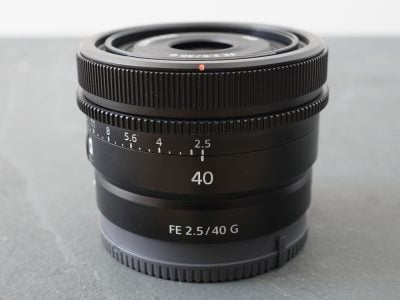Sony FE 40mm f2.5 G review
-
-
Written by Gordon Laing
Intro
The Sony FE 40mm f2.5 G is a compact lightweight prime lens designed for full-frame e-mount mirrorless cameras. Announced in March 2021 and costing $599, it delivers slightly wider than so-called standard coverage that in practice strikes a surprisingly compelling balance between traditional 35 and 50mm lenses.
Meanwhile the f2.5 aperture may not be as fast as some other models, but on full-frame bodies can still provide a fair degree of blurring in the background, while more importantly allowing a very compact design. This makes it one of the most attractive general-purpose walkaround lenses from Sony and in my review I’ll show you how it performs in practice. Keep scrolling beyond the video for the written highlights.
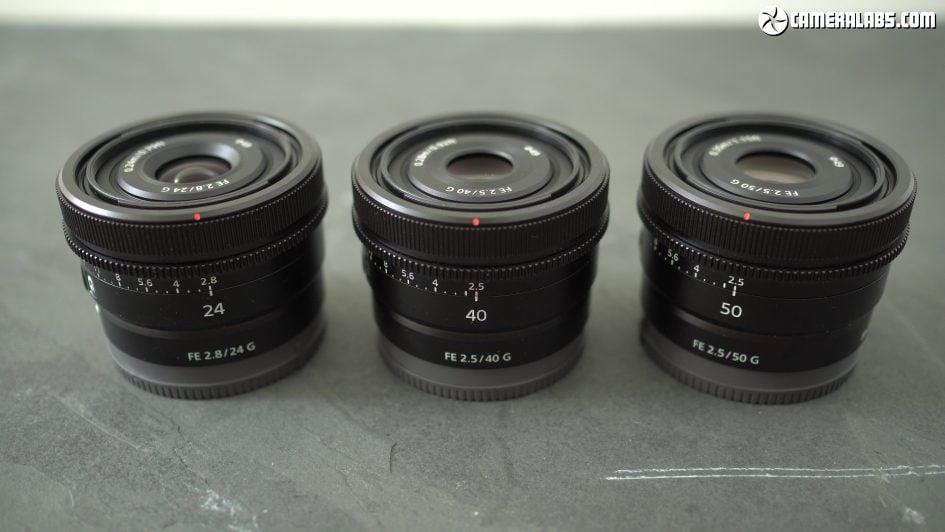
Above: The 40 2.5 was launched alongside 24mm f2.8 and 50mm f2.5 models as part of a compact triplet. All three share the same external design and dimensions, not to mention the same $599 price, and I’ve made reviews of all three. Which is your favourite? The concept of a compact prime lens is not a new one. Sony originally launched its full-frame mirrorless system with a 55 1.8 and 35 2.8 which both showed-off the potential for compact combinations. But apart from a later 28 f2, Sony seemed to move away from this initial strategy and instead focused on very high performance and inevitably larger lenses. While I love the quality of G Master lenses, I always lamented the lack of any new compact models from Sony for times when portability or discretion are more important.
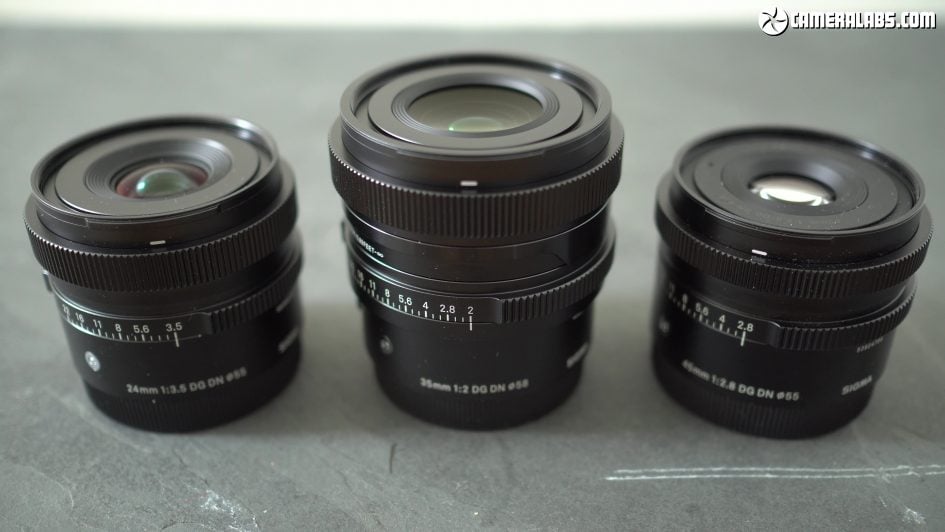
Above: Third parties saw the opportunity and ran with it, most notably Sigma which now has four compact primes available in the e-mount as part of its Contemporary I series. Here’s the Sigma 24, 35 and 45 models, with a 65 completing the set, and coincidentally the first three all cost roughly the same as the new Sonys. In this review you’ll see how the new Sony FE 40mm f2.5 G directly compares against the Sigma 45mm f2.8 DG DN, both attractive options for anyone who wants a walkaround lens that’s a bit different from a standard 50.
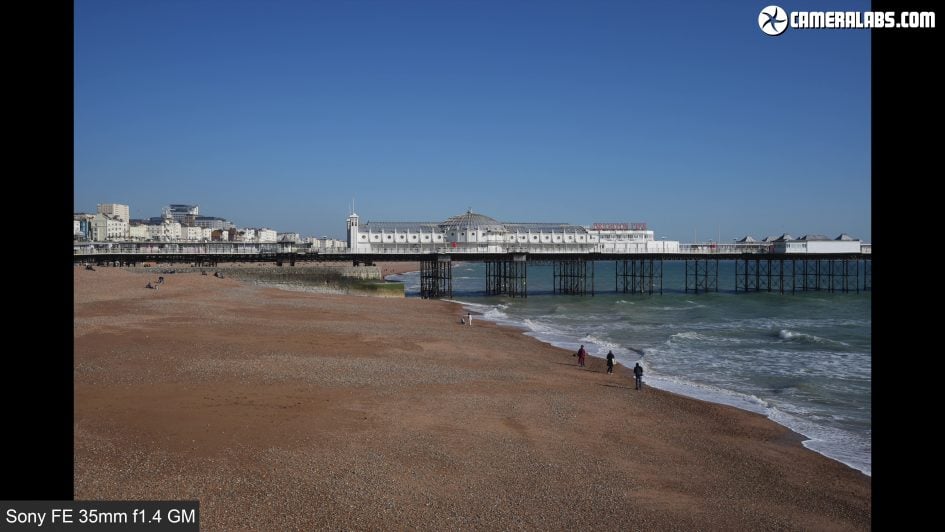
Above: Before anything else, let’s look at coverage, starting with a Sony 35mm.
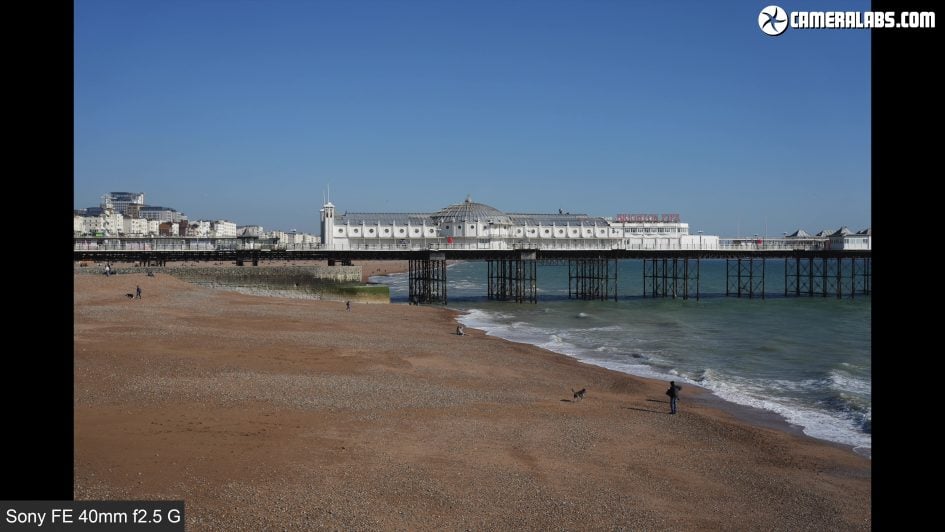
Above: Next here’s the Sony 40 with its slightly tighter field of view.
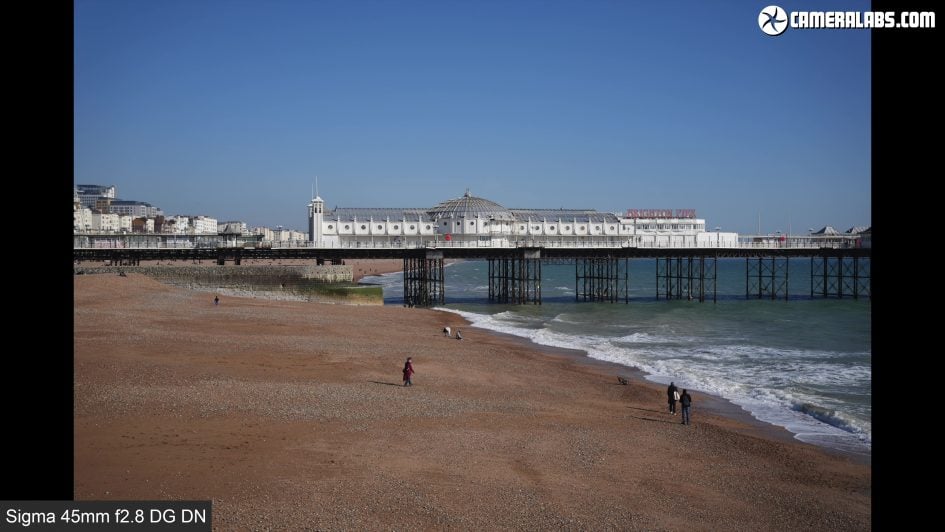
Above: Now for the Sigma 45mm being a little tighter still.
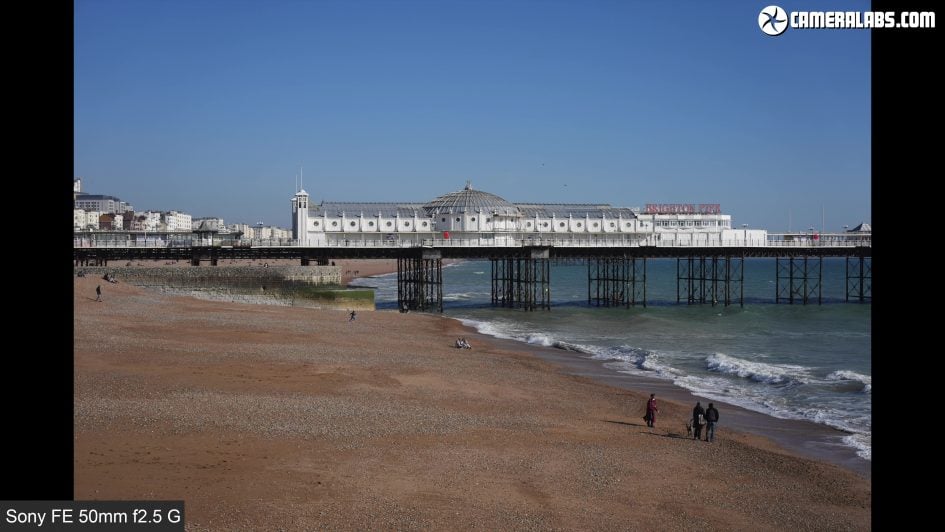
Above: Finally the Sony 50 with so-called standard coverage.
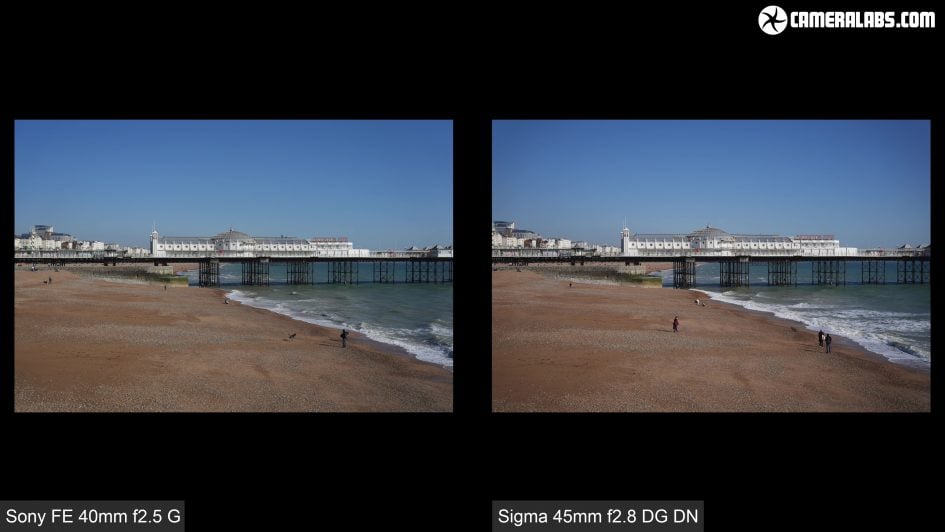
Above: Side by side there doesn’t appear to be that much between them, but each feels quite different in use.
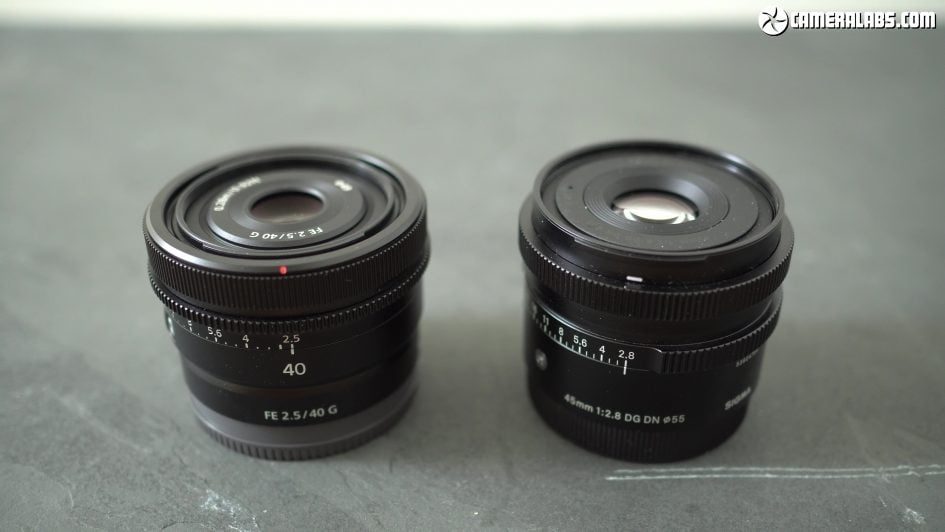
Above: At 68x45mm and weighing 173g, the Sony 40 2.5 can’t be described as a pancake lens, but remains very compact none-the-less. Alongside, Sigma’s 45 2.8 is fractionally narrower and longer, and a little heavier at 215g, but you wouldn’t choose one over the other on size or weight as they’re essentially the same once mounted.
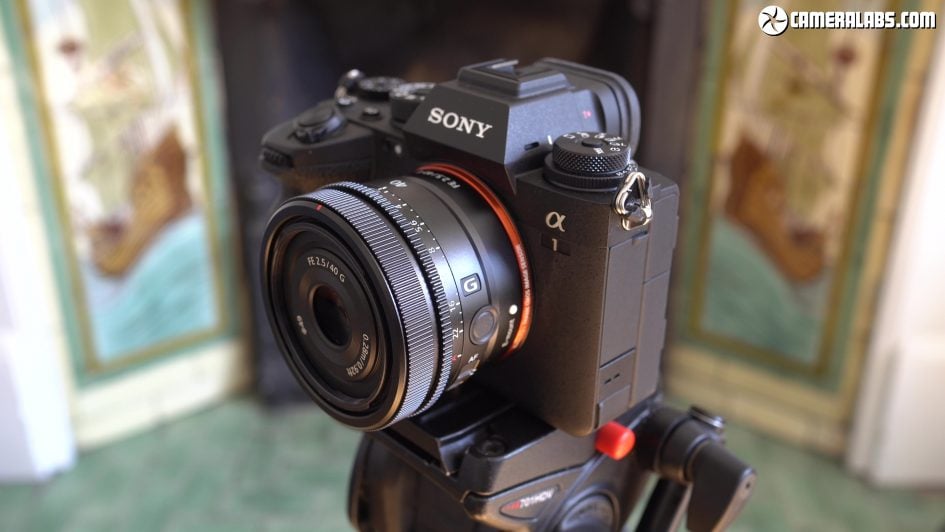
Above: They do have quite different controls though. The Sony 40 2.5 has a tactile but very narrow aperture ring with a smooth focusing ring right alongside. Impressively Sony’s managed to squeeze in a small customisable focus hold button as well as the chance to declick the aperture ring with a switch, features both missing from the Sigma. The filter thread measures 49mm.
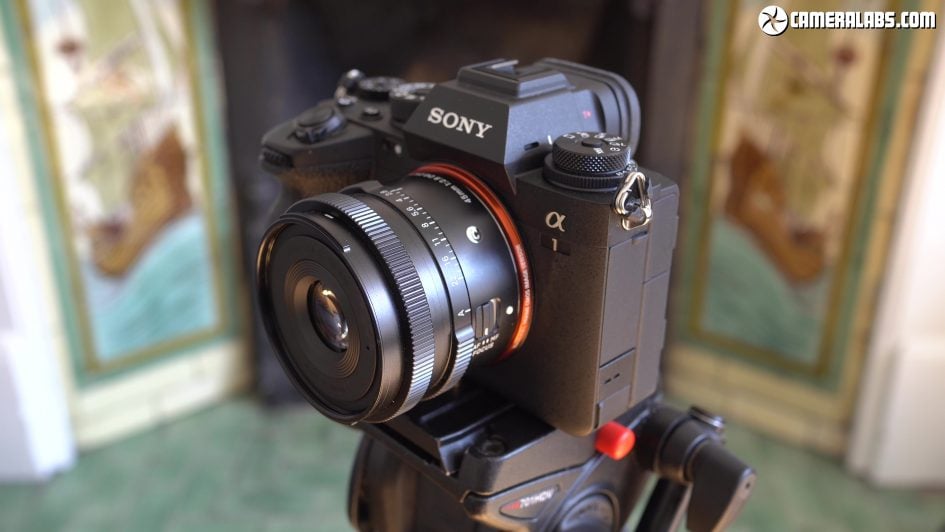
Above: Meanwhile the Sigma 45 2.8 positions its aperture ring further back with wider knurling on either side of the f-numbers. The manual focusing ring is similarly-damped to the Sony lens, but again the Sigma lacks the focus hold button and de-clickable options. It’s less-featured, but less cluttered too. The Sigma takes larger 55mm filters.
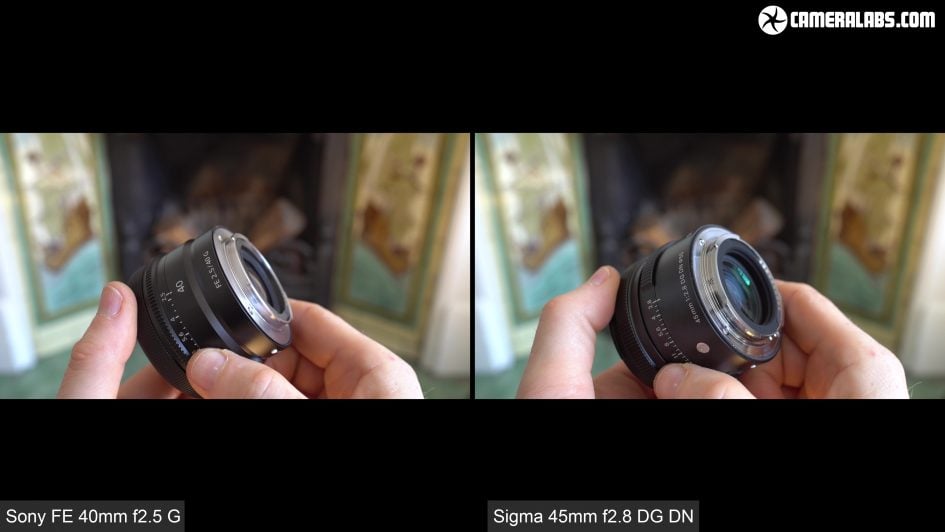
Above: Both lenses are described as being dust and splash-proof with subtle rubber grommets at their mounts, although thorough resistance may not extend to their entire barrels so bear that in mind.
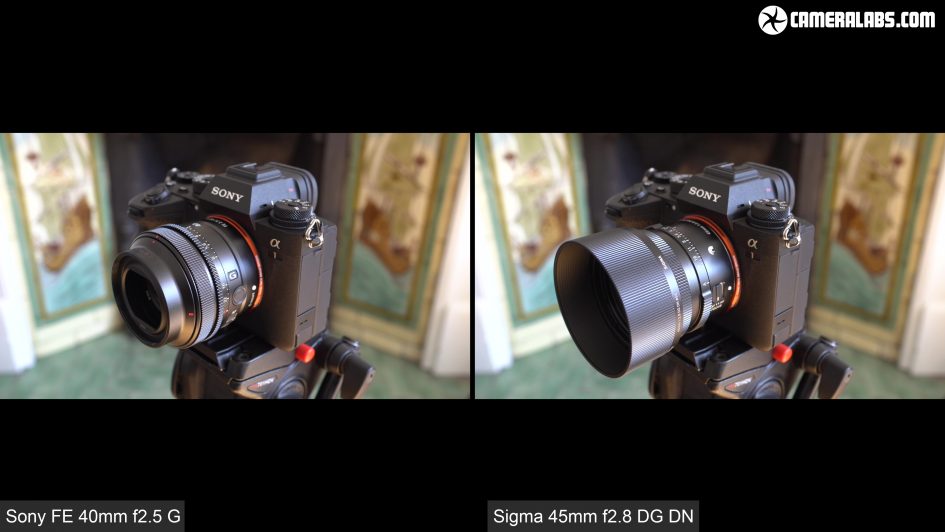
Above: Both lenses are supplied with very different hoods. Sony’s opted for a design that slopes inwards and can be used with the cap without reaching inside, while Sigma’s is a more traditional cylinder that’s clearly much more substantial. Both proved effective, but while Sony’s occupies much less space, I personally preferred the look of the Sigma.
In terms of focusing on the Alpha 1 body in Single AFS mode, the 40 2.5 was swift, silent and confident. Switching to the Sigma 45 2.8, again on the Alpha 1 at the maximum aperture and you’ll notice it’s still pretty quick, but there’s a tiny wobble at the end of each focus-pull to confirm. I’ve noticed this with Sigma lenses on Sony bodies before and it goes away in Continuous AFC mode, but in single AF there’s a minor contrast hunt. Nothing to be concerned about though. In wide area with Continuous AFC and human eye detection enabled, the camera drives the 40 2.5 very confidently.
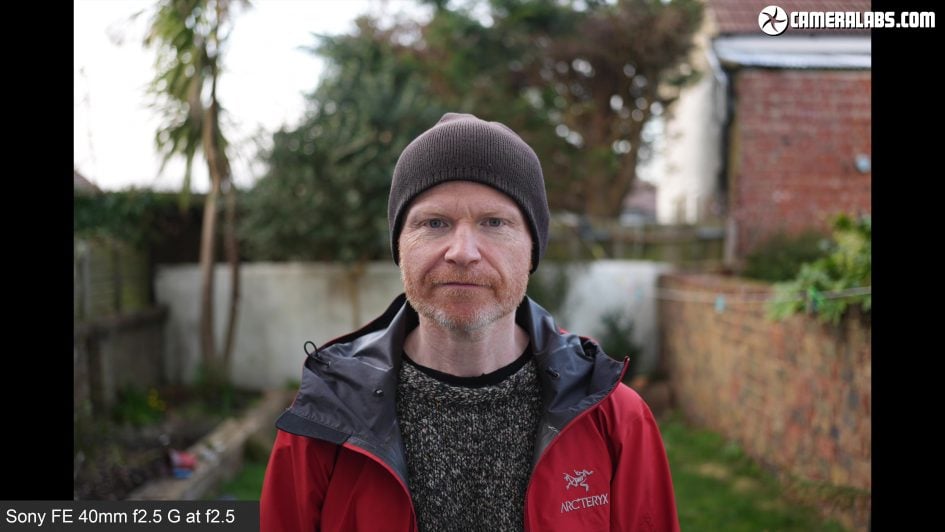
Above: Now for a portrait test, starting with the Sony 40 2.5 with its aperture wide-open. 40mm is more on the environmental side of portraiture, but still long-enough to avoid distortion if you’re careful, while also able to deliver some blurring in the background at f2.5.
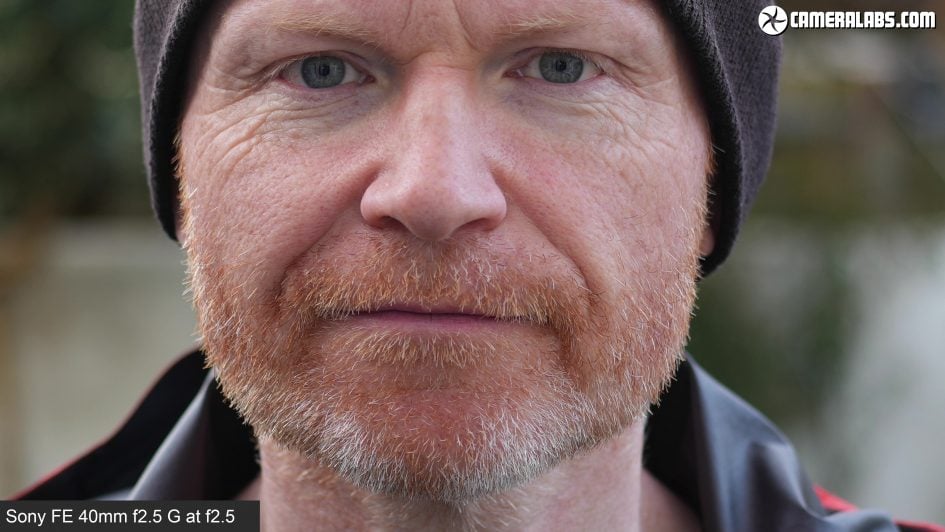
Above: Taking a closer look at the Sony portrait shows pin-sharp details on my eyeball as driven by the Alpha 1’s eye-detection, and across multiple portrait tests every single eye was equally sharp.
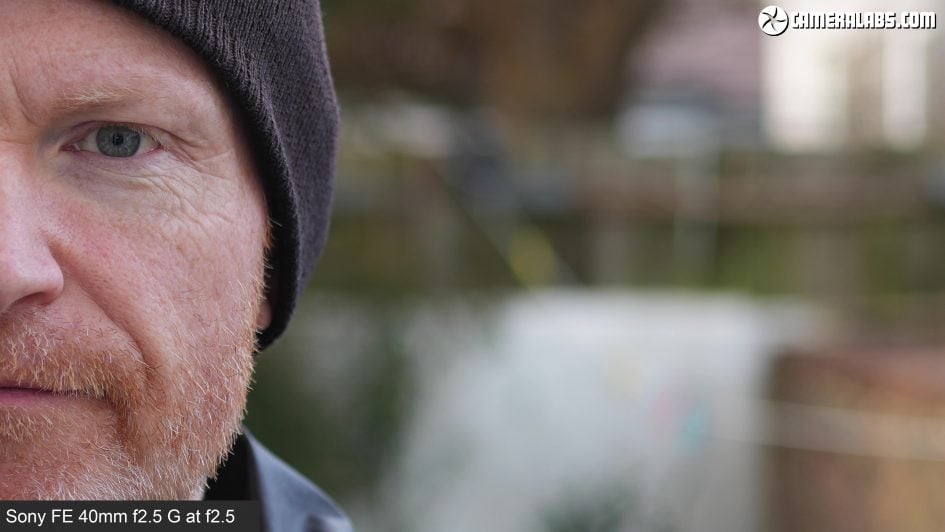
Above: Moving sideways for a closer look at the rendering shows a reasonable degree of subject separation and while the effect can be attractive, there are fairly defined edges to some of the blurred elements.
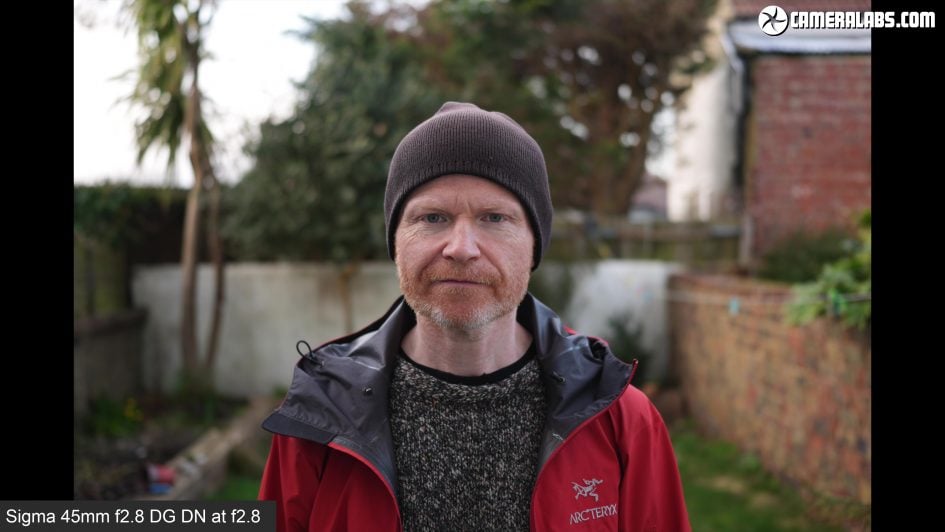
Above: Now for the Sigma 45 2.8 from the same distance which understandably means a slightly tighter field of view. In my tests on the Alpha 1, I experienced a lower hit rate using eye detection than with the Sony lenses. I still got plenty of focused images, but not the 100% hit-rate of the Sony lens.
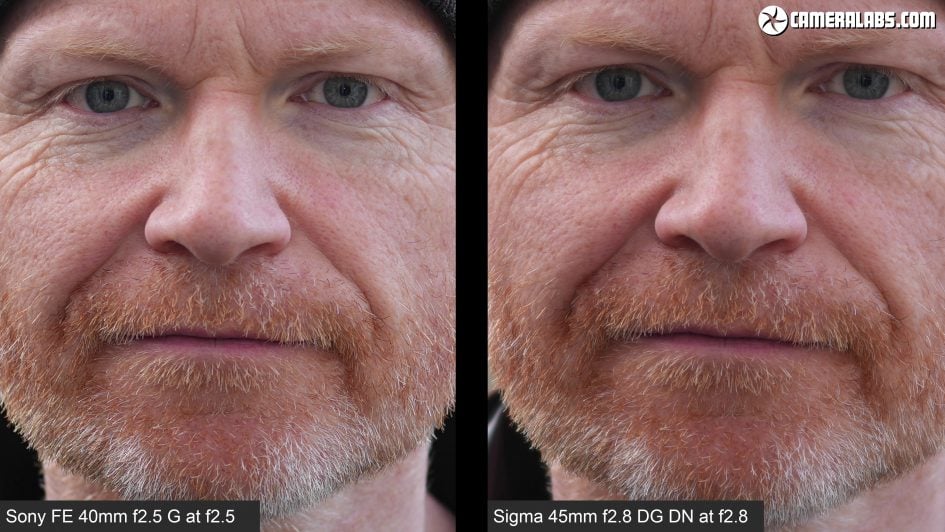
Above: With both portraits side by side, you’ll notice my eyeball on the Sony on the left is visibly crisper than the Sigma on the right. It’s not that the Sigma is bad or poorly focused, and viewed in isolation I’d be happy with it, it’s just that the Sony 40 is sharper.
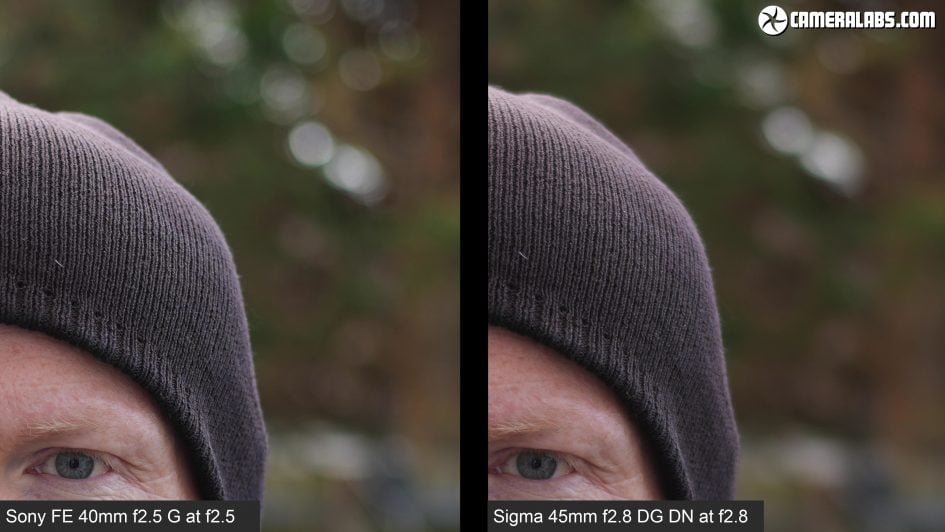
Above: That sharpness is however a double-edged sword as when you compare the background blurred areas, the Sigma is noticeably smoother with less-defined edges and a less busy-looking result overall. Of course the Sigma also has the benefit of a slightly longer focal length, but you’re mostly seeing different rendering styles here. The look of bokeh is a very personal thing though and some prefer one style over the other. So which lens did you prefer for the portrait test?

Above: Now for the rendering of bokeh balls from close range, starting with the Sony 40 2.5 near to its closest focusing distance. From this distance it’s certainly possible to generate some reasonable bokeh balls, but unsurprisingly for a lens of this size and price, there’s visible outlining around their edges and concentric onion-ringing patterns within. With the lens closed to f4 or smaller, the seven-bladed diaphragm system also becomes visible with blobs taking on a seven-sided shape.
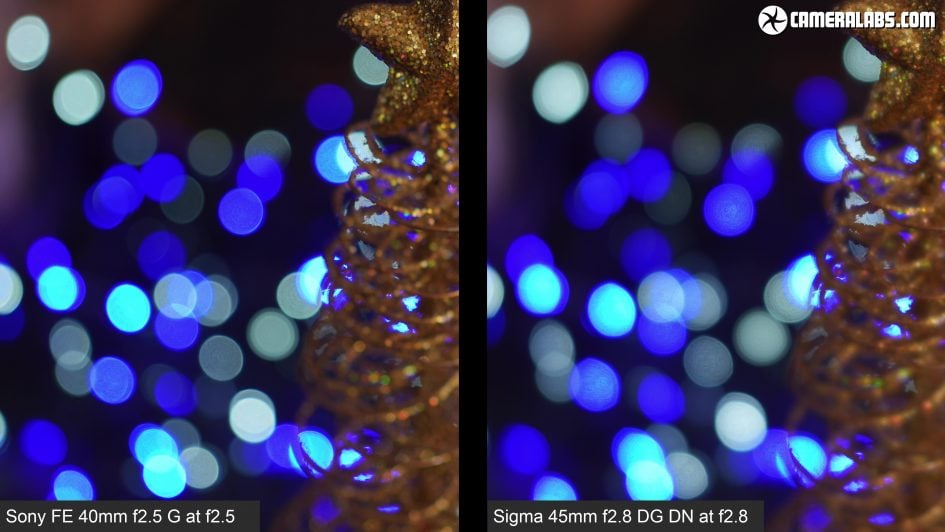
Above: Here’s the Sony 40 2.5 on the left and the Sigma 45 2.8 on the right, both at their maximum apertures and from the same distance. With a slightly longer focal length, it’s no surprise to find the Sigma delivering a slightly tighter view with slightly bigger bokeh balls, but otherwise their rendering style is pretty similar. The Sigma on the right may exhibit a little less outlining on its blobs, but both contain textures and share similar shapes as you close their apertures-down.
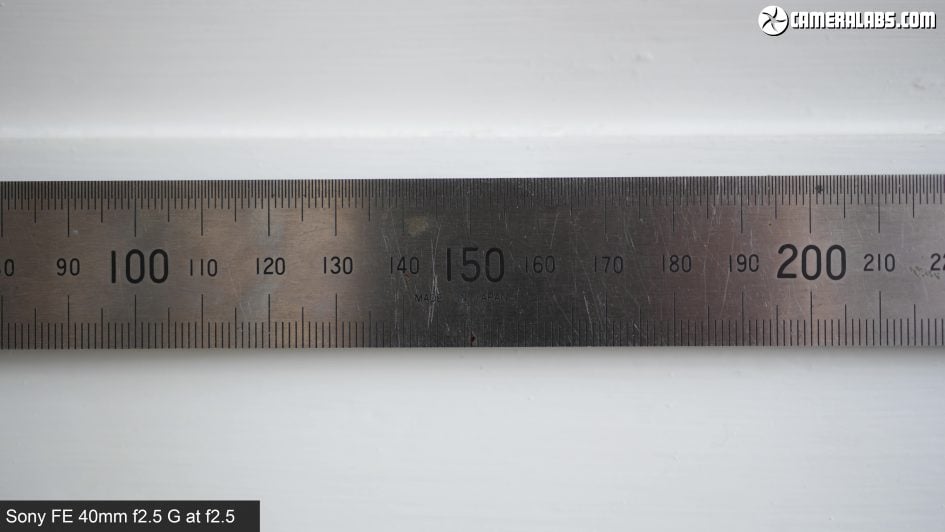
Above: In terms of minimum focusing distances, Sony quotes 28cm with autofocus or 25 with manual, and here’s what I could achieve when manually focusing – reproducing a subject size of 14cm, and even with the aperture wide-open the details are pretty sharp right up to the edges.
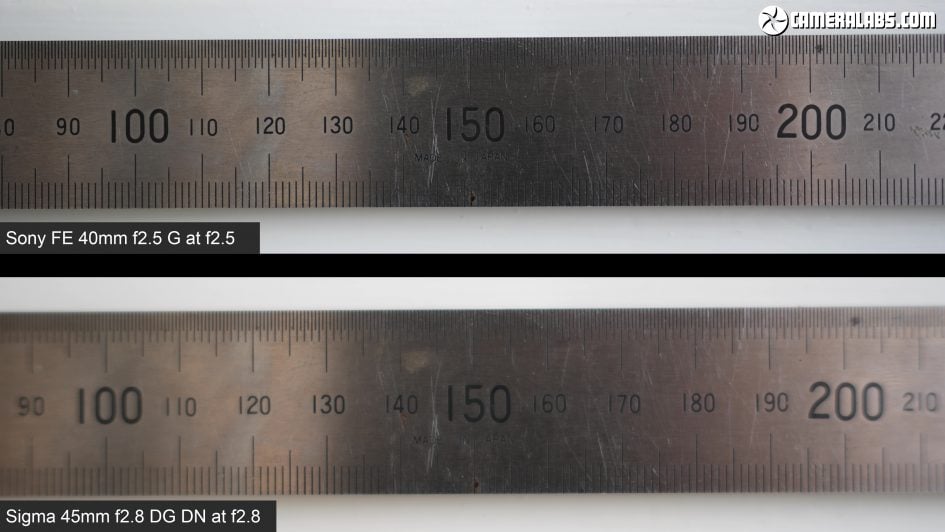
Above: Now here’s the Sony 40 at the top and the Sigma 45 at the bottom, both from their closest manually-focused distances and their maximum apertures. The Sigma at the bottom is delivering slightly greater magnification, reproducing 13cm across the frame, but with their apertures wide-open the Sigma becomes much softer at the edges from this distance.
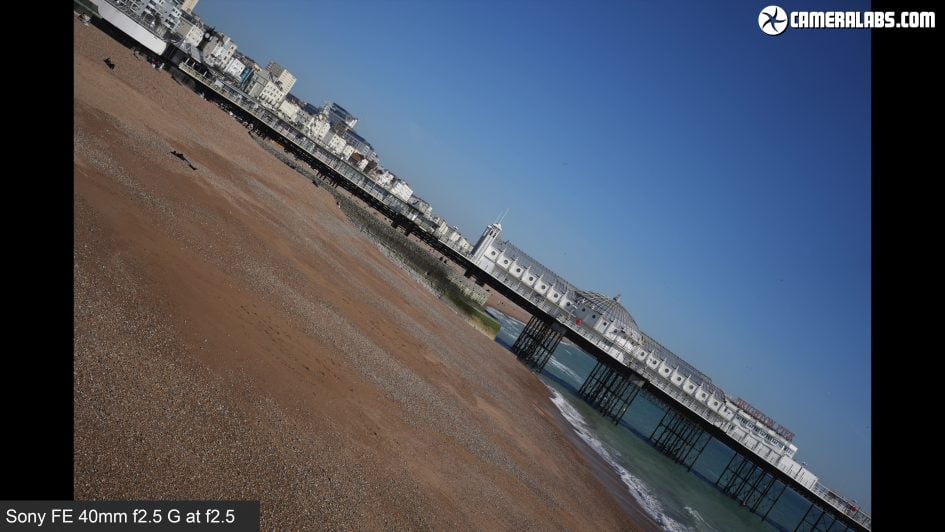
Above: At the other end of the scale, here’s my distant landscape scene, starting with the Sony 40 2.5 on the Alpha 1 at f2.5, and with the view angled so that details run right into the corners.
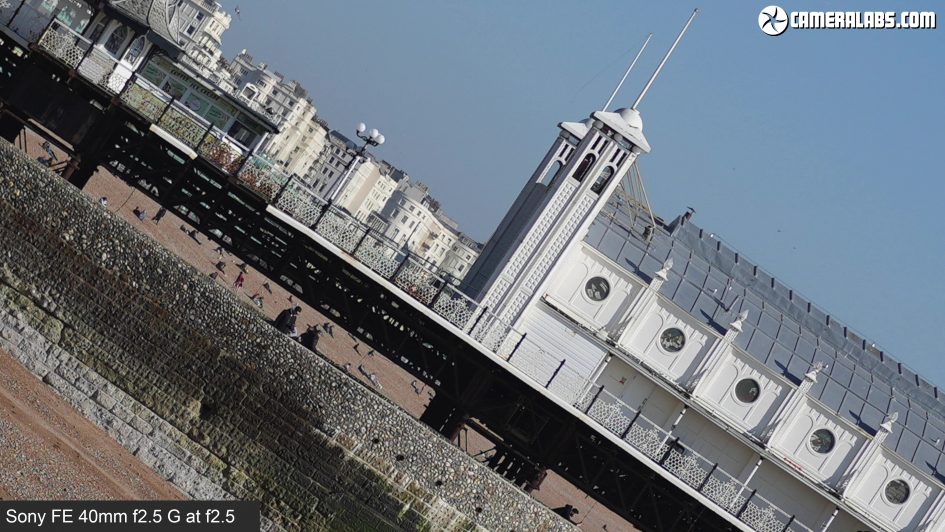
Above: Zooming-in on the middle section shows there’s no problems in terms of resolving fine detail at the maximum aperture, and no need to close it down to improve the quality here.
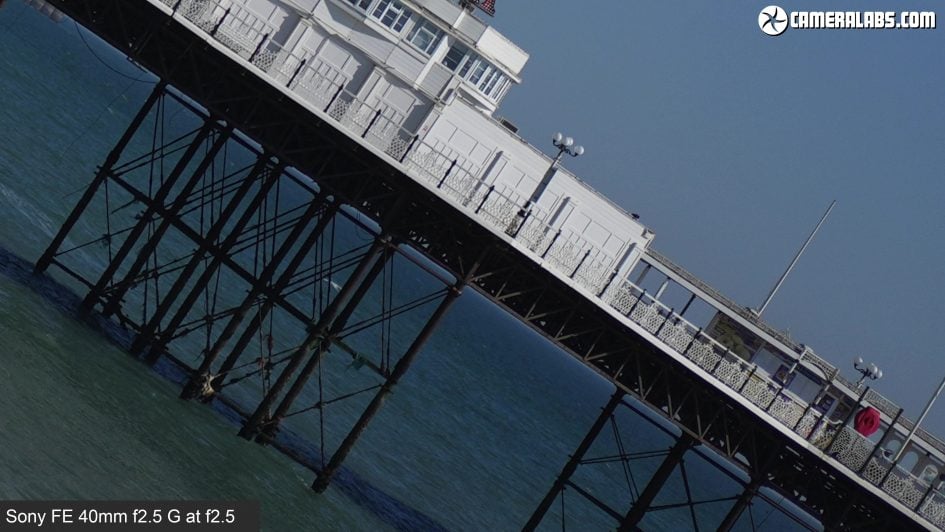
Above: Moving out to the far corner also shows the lens is capable of maintaining sharpness across the frame even at the maximum aperture, and there’s only very mild vignetting or darkening in the corners to mention. As you close the aperture the vignetting quickly disappears but it’s clear there’s no significant benefit to sharpness which looks great out of the gate. Checking the RAW files shows the JPEGs are benefitting from some correction to geometry and vignetting with the default Alpha 1 settings, but that’s normal for this kind of lens.
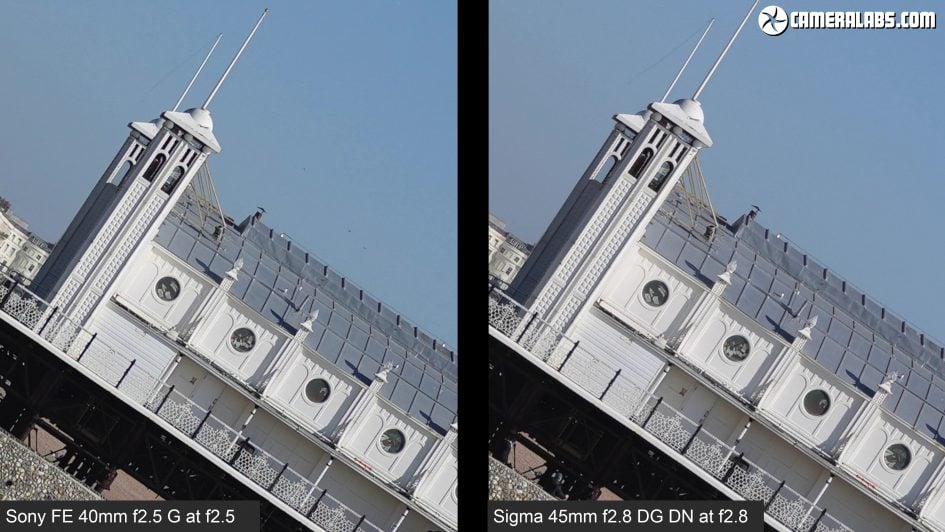
Above: With the Sony 40 2.5 on the left and the Sigma 45 2.8 on the right, both showing magnified views of their central areas, you’ll see both perform very well at their respective maximum apertures, although obviously the Sigma’s view is a little more magnified due to its slightly longer focal length.
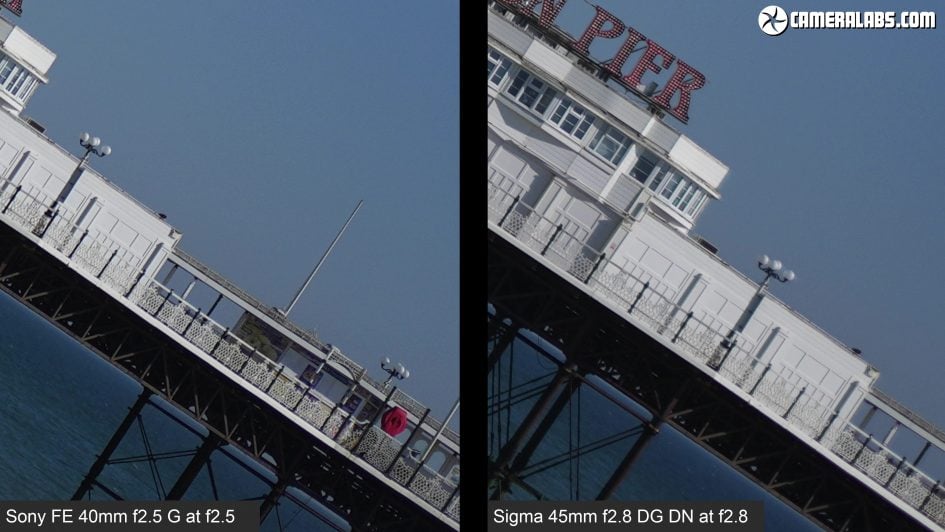
Above: Switching to their corners and again that difference in focal length means we’re looking at different details but from the same part of the frame. I’d say the Sony 40 has an edge in the very extreme corners, but you don’t need to move in very much before they’re effectively neck in neck. So a very minor win for Sony here, but both lenses are doing well with distant subjects even wide-open and draw alongside when stopped down a little.
In terms of autofocus for movies, the 40 2.5 is smooth, quiet and confident. In comparison the Sigma 45 2.8 also refocuses smoothly and quietly in movies, and now that it’s in AFC mode, the distracting hunting seen on the AFS test earlier has gone. So effectively a draw here.
In terms of face and eye detection for movies, the Sony 40 2.5 again easily tracks me around the frame. 40mm is also a nice focal length for pieces to camera when you want to capture more of the surroundings without getting too wide. Meanwhile the Sigma 45 2.8 also works pretty seamlessly for face and eye tracking. Maybe there’s a hint of the Sigma being a fraction less responsive than the Sony lens here, but it really is fractional.
And finally a focus breathing test starting with the Sony 40 2.5. As you focus the lens closer, the field of view reduces noticeably, an artefact that I’ve seen on a number of Sony lenses. It’s something that bothers some videographers or focus stackers, but won’t be an issue for most stills photography. In comparison the Sigma 45 2.8 exhibits much lower breathing than the Sony. Depending on your usage, this may make the Sigma more attractive.
Check prices on the Sony FE 40mm f2.5 G at B&H, Adorama, WEX, or Calumet.de. Alternatively get yourself a copy of my In Camera book or treat me to a coffee! Thanks!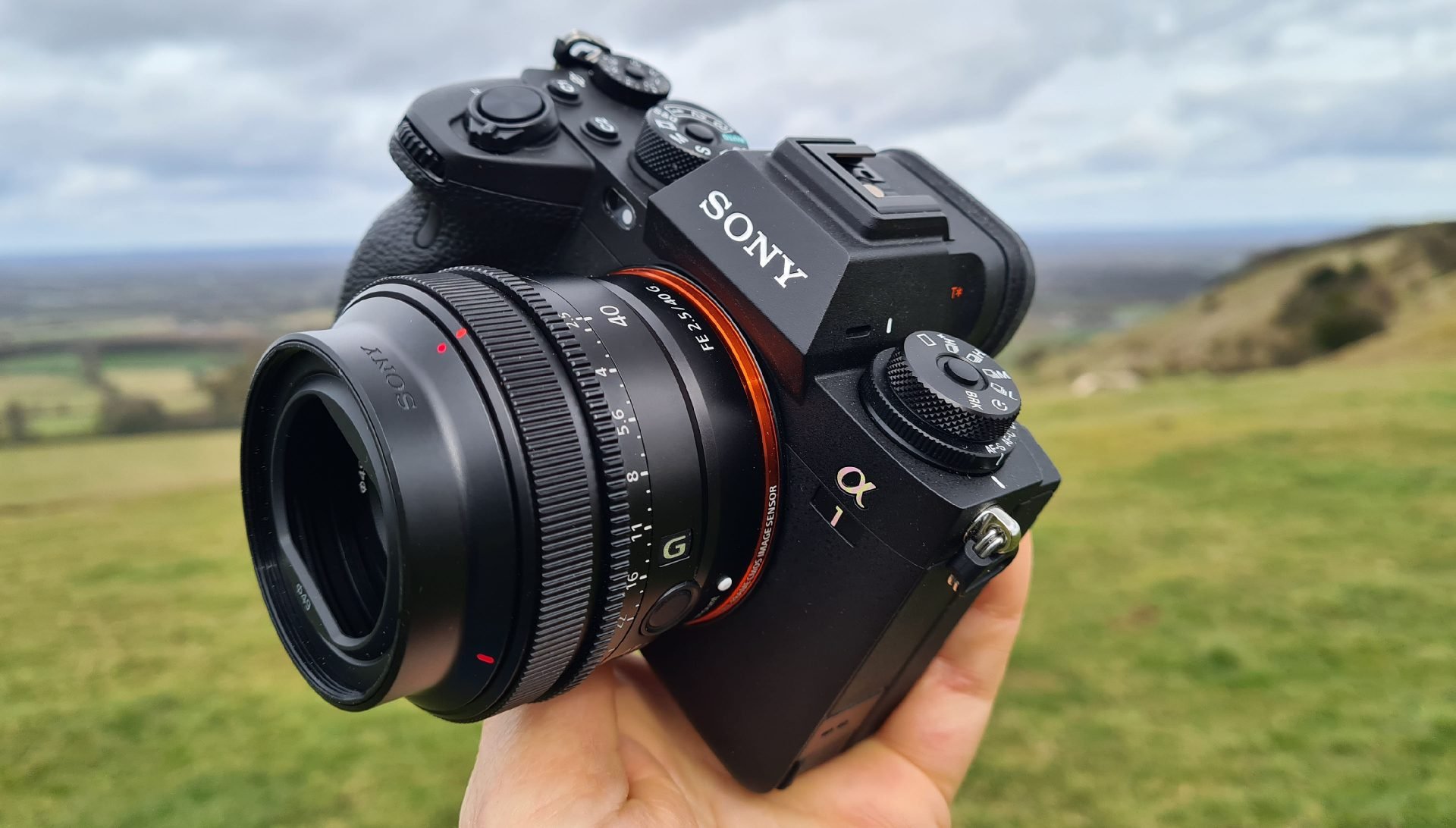
 The Sony FE 40mm f2.5 G is a simple but highly compelling lens. I found it immediately appealing and surprisingly refreshing, ideal for anyone who finds 50mm a bit too long for general use but feels 35mm is either too wide or not wide enough. In contrast, the 40mm coverage feels very natural and of the three new Sony primes launched together, it’s by far my favourite. Like the 24 and 50mm versions, the 40 delivers respectably crisp results across the frame even wide-open - much better than the budget 50 1.8. The aperture is sufficiently large for mild blurring effects, and the focusing is quick and quiet. What makes all three really special though is their size, which transforms any Alpha mirrorless body into a very compact, portable camera system. Like most lenses at this level, the rendering of blurred areas is a little busy and there’s also noticeable focus breathing. Ultimately I’m delighted Sony is catering once more to those who value portability. Of the three compact primes, my favourite once again is the 40 2.5, delivering coverage that feels both natural and yet refreshingly unique. It’s the perfect walkaround prime lens and every Sony owner should consider it.
The Sony FE 40mm f2.5 G is a simple but highly compelling lens. I found it immediately appealing and surprisingly refreshing, ideal for anyone who finds 50mm a bit too long for general use but feels 35mm is either too wide or not wide enough. In contrast, the 40mm coverage feels very natural and of the three new Sony primes launched together, it’s by far my favourite. Like the 24 and 50mm versions, the 40 delivers respectably crisp results across the frame even wide-open - much better than the budget 50 1.8. The aperture is sufficiently large for mild blurring effects, and the focusing is quick and quiet. What makes all three really special though is their size, which transforms any Alpha mirrorless body into a very compact, portable camera system. Like most lenses at this level, the rendering of blurred areas is a little busy and there’s also noticeable focus breathing. Ultimately I’m delighted Sony is catering once more to those who value portability. Of the three compact primes, my favourite once again is the 40 2.5, delivering coverage that feels both natural and yet refreshingly unique. It’s the perfect walkaround prime lens and every Sony owner should consider it.



